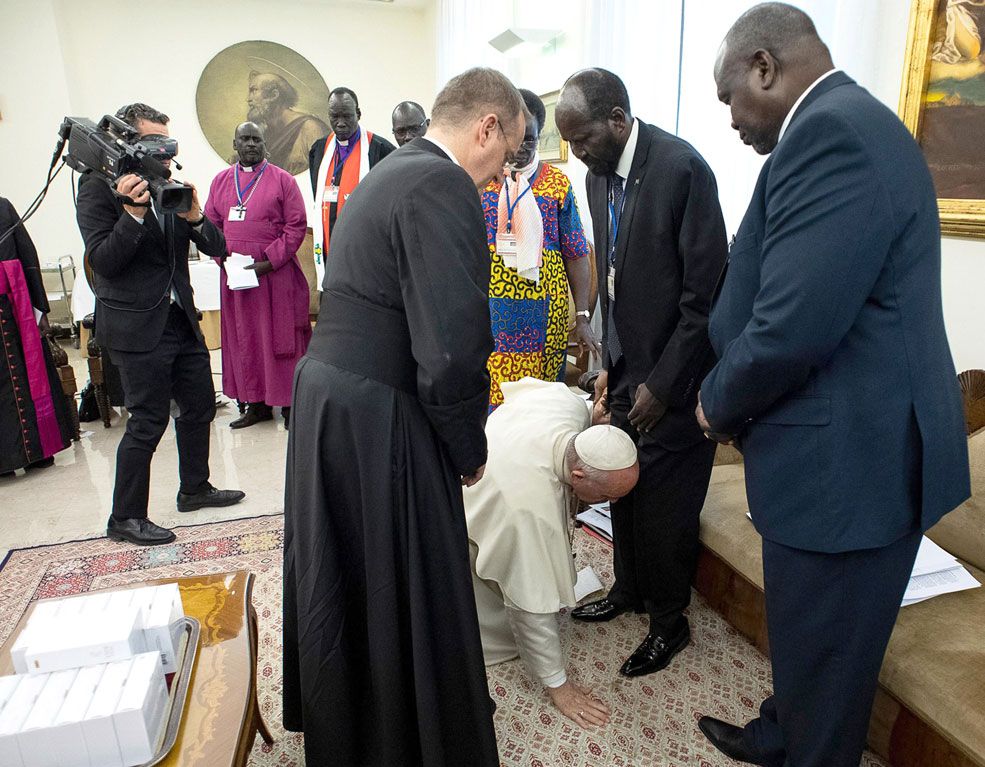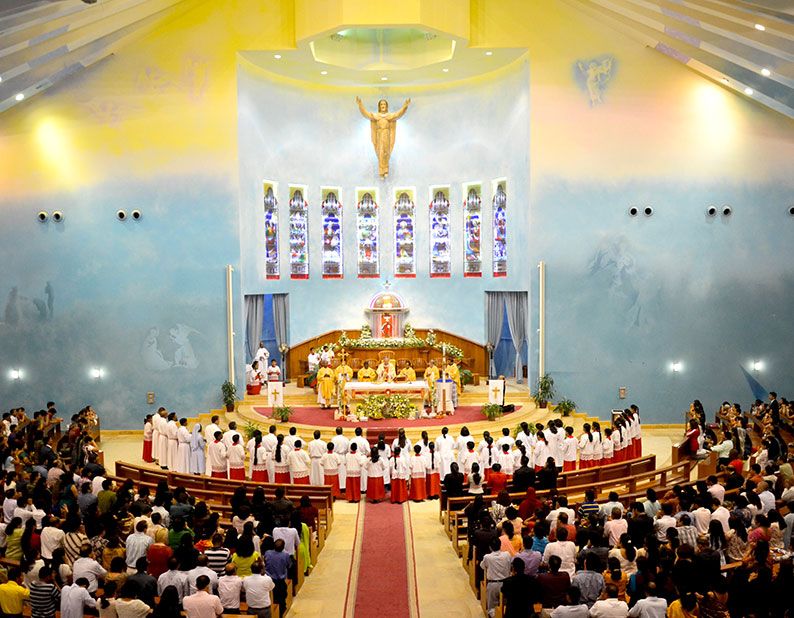Is the consecrated life still relevant in the life of today’s young people? What kind of consecrated life is at their service? What is demanded from consecrated persons in order to effectively accompany the young towards vocation discernment?
To answer, one has to begin by looking at the situation of young people. Where are they today and in what vicissitudes do they find themselves in?
The gospels offer a better measure to understand the youth’s existential situation. More specifically, the story of the rich young man immediately comes to mind (Mark, 10:17-22; Luke, 18:18-23; Matthew 19: 16-25). He is portrayed as posing odd questions considering his youthfulness. “What good must I do?” “What shall I do to inherit eternal life?” Yet from what transpired, his youthfulness was not a hindrance in inquiring about what is essential. In other words, there appears to be a definite search for what is good, authentic and lasting – values that often are forgotten.
Seeking Goodness
As it was then, so it is now — young people are still seeking for that which is good and lasting. To such a pursuit Jesus offered a listening ear. He permitted the person to articulate his questioning. Jesus allowed this seeker to realize the deeper significance of that budding desire. He reframed that inquiry and made God the important element in this quest.
“No one is good but God alone” (Mk. 10:18). There is no authentic search for life’s meaning without God in the picture. As with most young people of today, the man was seeking for a deeper reason of one’s existence. However, many of them today do not know where to look for the answer. It is clear that in their confusion and restlessness, there is a covert longing for something more.
On the part of the consecrated person, awareness of this yearning is a must in order to journey with them. Zeal to accompany the young needs a lot of patience. The Final Document of the Synod of Bishops on Young People, Faith and Vocational Discernment (2018) employs the story of the disciples’ walk to Emmaus (Lk. 24:13-35) to illustrate this fact. The Church patiently journeys with the young in the same manner Jesus forbearingly travelled with His discouraged followers. At the core, gradual progress is a constant characteristic.
The Church, as it were, allows the youth to open up as much as the Lord Jesus initiated the conversation: “What are you discussing as you walk along?” Understandably, their story was far from perfect. It must be so since they were in pain and confusion. Jesus needed to stay in their midst and speak to them. Interestingly however, the Lord did not mince words. He succeeded in perceiving the real condition of the disciples. “Oh, how foolish you are! How slow of heart to believe all that the prophets spoke!” (Lk. 23:25). There was a perceived difficulty and Jesus pointed it out.
Exemplary Life
While the Church is called to realize in humility its foolishness and slowness of heart, she also has to urgently recognize that young people are susceptible to such alarming conditions. As a matter of fact, she can only accompany the young in the same measure that she allows Jesus Christ to walk with her.
Therefore, the Church is summoned to listen further. Her service to the young is synonymous to her capacity to allow the Word of God to enlighten her struggles and miseries. In the same vein, a consecrated community courageous enough to accept its brokenness is capable of welcoming the victorious grace of God. Along this line of reasoning, consecrated life at the service of the young is admonished to replicate this mission of the Church.
In both the contemplative and apostolic dimensions of consecrated life, the young are supposed to see the persuasive hold of Jesus in the lives of those dedicated to Him. This commendably bears witness to the priority of God in the lives of men and women. Such life of prophecy renders the essential logic of consecrated life clear: to draw near to Jesus and to imitate His life.
As it is clear by now, imitating Christ’s life is the primary mission of consecrated life. By making Jesus’ presence clear in their lives, consecrated persons may offer an avenue where the young of today may find answers to their nagging question about life, goodness, authenticity and that which is lasting.
Jesus Loved Him
Going back to the gospel account of the rich young man, another element demands consideration. When he responded to Jesus’ query regarding his observance of the law, the evangelist allows the reader to peer into the tender connection between the two. “Jesus, looking at him, loved him” (Mk. 10:21). It is the Lord who first perceives the depth of human longing before the person realizes it himself.
As it always happens, the human heart desires for something nobler, albeit from time to time he is unaware. In this situation, Jesus penetrates into the complexity of his fundamental existential yearning. This is the divine pedagogy in which Jesus accompanies the young. This is exactly the same experience of each consecrated person. It is at the core of every vocational journey.
The initiative of every person’s calling effectively comes from God, who looks at each person with love. This gentle gesture of beholding the person in charity is also illustrative of the Church’s mission towards the young. For consecrated life to be of service to the young, it must be a joyful witness of the gratuitousness of God’s love. The call to a life of consecration is not merited by anybody.
To help young people of today, it is imperative that religious communities become centers of prayer and contemplation: to pray not only for the young but also with the young. It is certain that a prayerful soul is capable of listening to God’s calling and only in this context does vocation exists. Moreover, prayer renders the community into communion. A reawakening of this fraternal life is another potent proclamation of consecrated life. That which binds consecrated persons is not their mutual desire to be together.
Fraternal Life
In conclusion, this act of love from God and the response of the person in commitment form the basic paradigm of vocation. A clear proclamation of this vocational identity is called for in front of young people searching for meaning. Clarity in understanding this reality is a necessity in the consecrated person’s desire to advise the youth.
This life of prophecy, a persuasive vocation promotion, is manifested in the authentic fraternal life of the members. The act of living together is a powerful advertisement. In this way every religious community is transformed into “schools of communion, centers of prayer and contemplation, places of witness of intergenerational and intercultural dialogue and arenas of evangelization and charity.”
The need for young people to see communities of consecrated life as a fraternal gathering of praying persons centered on the Eucharist is great. The credibility of each vocational proposal is only as powerful as the consecrated person’s appreciation of the real presence of Jesus in the Eucharist.
A final note is called for here. Jesus’ answer to the young man in the gospel is something to ponder on. “Go, sell and give to the poor.” In all the three synoptic gospels, these are the common elements that open up to the act of following. The initial desire to seek for what is good necessarily matures into a commitment to total self-offering. It all starts with a longing for meaning in life and is reinforced by a ceaseless and attentive listening to the Word in prayer.
Without doubt, this pattern forms the backbone of consecrated life. At the end of the day, the intensity of self-sacrifice espoused by those consecrated is the clearest summons to the young to embrace a life of total dedication.



























